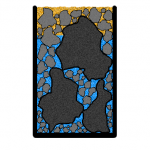Articles in the ‘Key study hacks’ category Page 4
-
Phonetic components, part 1: The key to 80% of all Chinese characters
At least 80% of all Chinese characters are made up of one semantic component (meaning) and one phonetic component (pronunciation). The sheer number of characters formed this way means that these characters ought to be taught properly, yet I think this topic is largely glossed over. This is the first article of two dealing with phonetic components and how they can help you learn Chinese better.
Read → -
Learning how to learn Chinese through self-experimentation
Rigorous scientific research typically requires large sample sizes, otherwise it isn’t possible to draw any conclusions about the population at large, which is the goal of most studies. However, experimenting with yourself as the only participant might not be relevant for other learners, but it’s highly relevant for you. This article is about how to use self-experimentation to learn Chinese.
Read → -
Horizontal vocabulary learning in Chinese
The normal thing to do when we learning characters or words is to focus on deepening our knowledge, researching components and understanding more about what we’re trying to learn. Some problems can’t be alleviated this way, however, instead they call for horizontal vocabulary learning, i.e. to putting the character or word into context and to compare it with similar characters or words. Only then can we grasp the bigger picture.
Read → -
How to create mnemonics for general or abstract character components
Anyone who has tried mnemonics for learning Chinese characters knows that some components are easier to link together than others. This article discusses in detail how to deal with abstract or general character components and how to handle components with the same or overlapping meaning, an essential skill if you’re serious about character learning.
Read → -
Remembering is a skill you can learn
Contrary to what many people believe, a good memory can be trained. Memory champions are just ordinary people who have practised a lot. There are many clever techniques and tricks you can use to remember things (such as Chinese characters or words) very efficiently. This article is meant to be an introduction for those of you who are new to the fascinating world of memory training.
Read → -
Have fun learning Chinese or else…
Having fun while learning, or at least making the best of every situation, is essential. Learning a language requires a lot of time and if we don’t enjoy the process, we aren’t likely to invest the time we need to master a language.
Read → -
Learning Chinese in the shower with me
This article is about using time and space in your shower to learn more Chinese. This might seem extreme, but it’s just another method of diversifying your learning. Why spend high quality time in front of your computer or in the library learning things you could equally well learn in your shower?
Read → -
Vocalise more to learn more Chinese
Do you know how to make your passive learning more active and thereby learn a lot more Chinese? This article is about how you can increase your awareness of the language around you, process it more actively and therefore also learn more from the experience.
Read → -
Don’t just read about language learning methods, try them!
When reading about ways of learning languages, it’s easy to just nod or shake one’s head in approval or dismissal. This is not enough if we want to master the art of learning a language. We need to identify the methods or ideas that have potential and actually try them. Only then can we know if they are helpful or not.
Read → -
The time barrel: How to find more time to study Chinese
If we want to combine studying with a normal life or if we want to get the most out of pure language studying, we really need to examine the time we have available and see if it’s possible to learn more without removing other important things. This article uses the metaphor of a barrel with rocks, pebbles, sand and water to show that most people have more time available than they think.
Read →








